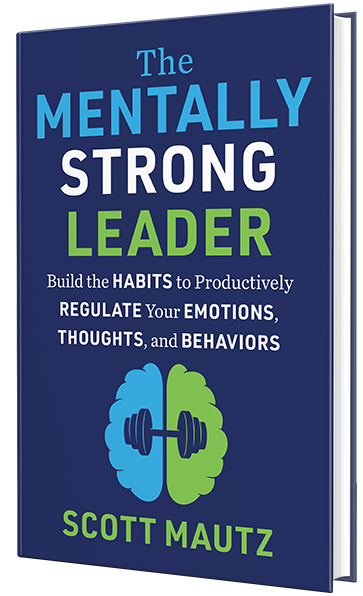
INSIGHTS (on leadership/self-leadership)
Why is it so dang hard to change? Neuroscientist Gabija Toleikyte explains it’s because of a war between two parts of your brain – the mammal brain, or Amygdala, which constantly scans the environment for danger and actively seeks safety, and the human brain, or pre-frontal cortex, which generates rational thinking and triggers the desire to make deliberate changes in your thoughts and actions. Interestingly, the Amygdala is capable of shutting down the pre-frontal cortex at times. Ever feel your emotions cancelling out rational thought? That’s your mammal brain taking over and closing down your pre-frontal cortex in what’s known as an “Amygdala hijack.” To win the battle over the Amygdala in the face of change (which triggers a distracting discomfort with uncertainty), Toleikyte advises building a habit of engaging in Amygdala soothing activities. This includes taking a moment to breathe deeply and slowly when experiencing high-emotions, engaging in caring activities, and focusing on the positive in a situation—all of which calm the Amygdala down. On the other hand, you can also develop a habit of stimulating the change-craving pre-frontal cortex by pausing to engage in rational thinking, talking things through, and taking regular breaks to assess a situation with fresh perspective. This builds the brain’s ability to accept and create change (i.e. increases its neuroplasticity). The point here is that the emotional versus rational battle you experience is caused by bio-mechanical realities that make change harder. But it’s a conflict you have control over.
Would you prefer to LISTEN to this issue? It’s a new option: click below!
IMPERFECTIONS (a mistake I’ve made)
I recently forgot that context is everything. It happened when I didn’t get selected for a keynote I thought I’d be perfect for. Despite teaching and preaching the opposite of this, I then spiraled into a bout of “What’s wrong with me?” Instead of remembering there are many factors that go into selecting a speaker, many of which I can’t control, I focused on the one factor I reasoned I could have controlled – my (self-perceived) lack of ability. Yup, I went there. But so often, when things don’t go your way, it’s not about your ability; it’s about the inability to control the context in which that bad outcome happened. Case in point, I asked for feedback from the non-hiring party and they informed me the other candidate had qualifications that were more relevant for their audience (she was an engineer that could talk to a company of engineers, etc.) – things that were about her, not about me. Things that made her the right choice given the context in which she was considered. Yes, I forgot to analyze the context of the bad outcome, even though I teach the opposite, even though I just talked about this in Issue #13 for crying out loud. It shows you how easy it is to fall into this trap. Don’t—learn from my mistake.
IMPLEMENTATION (one research-backed strategy, tip, or tool)
As I write this, my new course, “Staying Positive in the Face of Negativity,” is the # 1 course on all of LinkedIn Learning! It speaks to the need right now for maintaining a realistic yet upbeat mindset when the world seems to be conspiring to keep us down.
https://www.linkedin.com/embeds/publishingEmbed.html?articleId=8125435660695072689&li_theme=light
Here’s a tip from the course, regarding how to stay positive by staying grounded, which you do in three ways:
1. Choose your orbit. Decide who you’ll surround yourself and spend time with, minimizing exposure to negative personalities. A 72-year-long study at Boston University found that the biggest contributor to living a happy, positive-minded life is surrounding yourself with happy, positive-minded people. It’s that simple, and that hard—I know you can’t just cut some people out of your life altogether. But at a minimum, you must set boundaries. Negative people often don’t understand the impact they have when they suck others into their negative orbit. So make them aware of the impact it’s having on you and establish that you won’t engage in the gloom. Author Jim Rohm said, “You’re the average of the five people you spend the most time with,” – so choose wisely.
2. Put energy into offsets. You always have the option, at least in your little corner of the world, to offset negativity you encounter with doses of positivity. It doesn’t have to be huge acts of volunteerism or switching to a career focused on serving others. It can be as simple as focusing on living your values, every day. For example, maybe a core value is showing kindness or role modeling integrity. Choosing to live this each day helps balance the karma of things. It helps you to not feel so powerless.
3. Draw from the past. A great source of grounding perspective is your past experience. Odds are, you’ve been through waves of what seemed like overwhelming negativity at the time, and yet you managed to come out on the other end OK when all was said and done. Negativity causes us to imagine an undesirable future rather than remember a manageable past. Trust in your ability to adapt and overcome in the face of negativity once again.




Leave a Reply